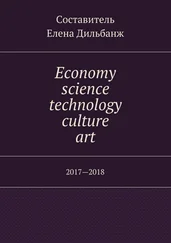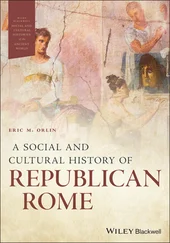63 Chapter 9.12Table 1 ICG Presidents with their country of origin and dates in service.Table 2 Honorary Presidents.Table 3 Honorary Vice‐Presidents.Table 4 Executive Secretaries and Treasurers of ICG, their nationalities, and...Table 5 CTC Chairs (Committee A before 1983).Table 6 Technical Committees: title (years of operation).Table 7a Member countries in the order they first joined and current represen...Table 7b Member countries in alphabetical order, date they first joined) and ...Table 8 ICG Congress record.Table 9 Weyl Awardees.Table 10 Gottardi Prize winners.Table 11 President's Award winners.Table 12 Turner Award winners.
64 Chapter 10.1Table 1 List of analytical sourcing methods.
65 Chapter 10.2Table 1 Typical compositions of glasses from the Late Bronze Age [9].
66 Chapter 10.3Table 1 Example compositions of natron‐based transparent glass of various Rom...Table 2 Example compositions of Roman opacified glass.
67 Chapter 10.6Table 1 Modern porcelain glaze compositions expressed in terms of either oxid...Table 2 Modern glaze compositions expressed with Seger formula.Table 3 Representative metal enamel composition.Table 4 Pigments used in the twentieth to twenty‐first centuries.Table 5 Main ancient pigments.Table 6 Mean compositions of some enamels on metal substrates.Table 7 Mean compositions of some glaze layers on terra cotta, stoneware, and...
68 Chapter 10.7Table 1 Mean chemical composition and standard deviation of Venetian natron t...Table 2 Mean chemical composition and standard deviation of the three groups ...Table 3 Chemical composition of opaque white Venetian glasses (wt %).Table 4 Chemical composition of colored Renaissance Venetian glasses (wt %).
69 Chapter 10.8Table 1 Chemical compositions of some medieval stained glasses.Table 2 Chemical compositions of medieval window glasses in present‐day Belgi...
70 Chapter 10.9Table 1 Maximum size and price of plate‐glass sheets [33].Table 2 Economic efficiencies of Owens‐machine and hand bottle forming in 192...Table 3 Advantages of automated forming machines in the United States in 1927...
1 General Introduction Figure 1 Obsidian core found in the sixth to fifth millennia BCE Aknashen Ne... Figure 2 The delicate stone knapping of an arrowhead made possible by obsidi... Figure 3 The striking stone‐knapping difference between a biface (left) and ... Figure 4 The abundant beds of black flint present in a 80‐m high limestone c... Figure 5 The strong contrast between the potential energy changes induced by... Figure 6 Viscosity relaxation of window glass(a) Time dependence of the ... Figure 7 Viscosity of window glass; solid line VFT fit to the data; dashed l... Figure 8 Volume effects of the glass transition. (a) Linear thermal expansio... Figure 9 Frequency dependence of the glass transition range. (a) Compression... Figure 10 Time dependence of the boundary between the glass and liquid phase... Figure 11 Pressure dependence of the glass transition of atactic polystyrene... Figure 12 Irreversibility of the glass transition: heat capacity hysteresis ... Figure 13 The calorimetric signature of orientational disorder in cyclohexan... Figure 14 Kinetics of equilibration for the viscosity and volume of E glass.... Figure 15 Equivalence of the relaxation kinetics for the enthalpy, volume, a... Figure 16 Relative importance of configurational and vibrational relaxation ... Figure 17 Vibrational and configurational contributions to the volume change... Figure 18 One‐dimensional schematic representation of interatomic potentials... Figure 19 Permanent compaction of polyvinyl acetate after compression at 800... Figure 20 Kauzmann catastrophe for amorphous selenium and ortho‐terphenyl (C Figure 21 Fragility as a measure of the extent of temperature‐induced config...
2 Section I Figure 1 The initial melting step in the making of float glass: the 1‐m deep...
3 Chapter 1.1 Figure 1 Glass‐forming systems, classified by chemical composition. Figure 2 Glass production by branches; figures in % in the sequence world/Un... Figure 3 Viscosity–temperature relationship of different glass‐forming syste... Figure 4 Temperature change brought about by a replacement of 1% of SiO 2by ... Figure 5 Liquidus lines of binary silicate systems (left: by wt, right: by m... Figure 6 Ternary phase diagrams in versions of technological relevance; shor... Figure 7 Miscibility gaps. (a) Extension of stable gaps in ternary borosilic... Figure 8 Change of Young's modulus E in the base glass composition 74 SiO 21... Figure 9 Change of the thermal expansion coefficient α 20–300in t... Figure 10 Ternary composition diagram of the system Na 2O–B 2O 3–SiO 2showing i... Figure 11 Hydrolytic stability of different pure oxides in aqueous solution ...
4 Chapter 1.2 Figure 1 Comparison between the compositions of the main raw materials used ... Figure 2 Sieve particle size distribution (PSD) curves of the main raw mater... Figure 3 Silica batch stone in a soda‐lime silica glass, resulting from inco... Figure 4 Undissolved chromite crystal in a soda‐lime silica glass as seen un... Figure 5 A feldspar knot with about 20 wt % Al 2O 3, enclosing bubbles (gas in... Figure 6 A sub‐mm‐sized silicon bead surrounded by H 2‐rich gas inclusions in... Figure 7 Increases of iron contamination caused by grinding of quartz made w...
5 Chapter 1.3 Figure 1 Absorption bands of Fe 2+, Fe 3+, and Cr 3+in a glass melt, and radia... Figure 2 Convection cells (vortices) in the melting tank of a glass furnace ... Figure 3 Liquidus temperatures and viscosities (dPa·s) of primary melts form... Figure 4 Early stages of batch melting, manually sketched after the scanning... Figure 5 Schematic view of a dissolving sand grain; the grain is surrounded ... Figure 6 Grain‐size distributions of two different glass‐grade sand qualitie... Figure 7 Dissolution turnover of the two sands of Figure 6 as a function of ... Figure 8 Rising velocity v SLIPof bubble swarms in a melt at a viscosity of ...
6 Chapter 1.4 Figure 1 Very large glass cylinders blown mechanically with the Lubbers proc... Figure 2 Sketch of Fourcault process in cross section. The molten glass flow... Figure 3 Sketch of Colburn process in a bird's‐eye perspective. The molten g... Figure 4 Sketch of the Pittsburg Pennvernon process in cross section. The mo... Figure 5 Sketch of the Asahi process in cross section. The rotatable Asahi b... Figure 6 Sketch of single‐pass wire roll out process (upper part insertion p... Figure 7 Overview of a float‐glass plant (scale not right: size of the right... Figure 8 Equilibrium thickness of floating glass on the molten tin when the ... Figure 9 Sketch of the tin bath part of the float process: (a) on vertical p... Figure 10 Sketch of the float process: (a) for sheets thinner than the equil... Figure 11 Shape and thickness distribution of a 2 mm thick float‐glass ribbo... Figure 12 Simulated thickness distribution at the exit of the bath for 2 mm ... Figure 13 The complex interactions of impurities with the atmosphere, tin ba... Figure 14 Sketch of slot downdraw process in cross section. The molten glass... Figure 15 Sketch of fusion downdraw process in a bird's‐eye perspective. Mol...
7 Chapter 1.5 Figure 1 Schematic overview of one section of an Individual‐section machine ... Figure 2 Temperature gradients and interface temperature between contact‐mat... Figure 3 (a–d) Blow & blow process, blank‐side. Figure 4 (a–d) Forming of the final container at the blow‐side (same for all... Figure 5 (a–d) Press & blow process, blank‐side. Figure 6 (a–d) Narrow‐neck press & blow process, blank‐side. Figure 7 Cross section of a modern feeder (double‐gob setup). Figure 8 Performance increase of IS forming machines over the years in conta... Figure 9 A modern pneumatic‐controlled 12‐section double‐gob individual‐sect... Figure 10 Parison just before blow‐mold closing and final container on the b...
Читать дальше












